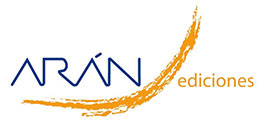Trabajo Original
Effect on nutritional markers of a model of aberrant crypt foci induced by azoxymethane and sodium dextran sulfate in Sprague Dawley rats
Aarón Kuri-García, Alejandra González-Reyes, Paola Jazmín Aranda-Vargas, Ulisses Moreno Celis, Carmen Mejía, Teresa García-Gasca, Roberto Augusto Ferríz-Martínez, Karina de la Torre-Carbot, Carlos Saldaña Gutiérrez, Jorge Luis Chávez-Servín
 Número de descargas:
36375
Número de descargas:
36375
 Número de visitas:
5624
Número de visitas:
5624
 Citas:
0
Citas:
0
Compártelo:
Introduction: aberrant crypt foci (ACF) are colon preneoplastic lesions that can be used as a tool to study preventive processes for colorectal cancer (CRC). This model consists of initiation induced by azoxymethane (AOM) and promoted by sodium dextran sulfate (DSS), simulating human colonic carcinogenesis in a rat model. There is no direct information on the effects of this process on nutritional markers. Objective: to determine the effect on nutritional markers after the induction of ACF by AOM/DSS in a rat model. Methods: ACF were induced in 24 four-week-old Sprague Dawley male rats by administration of 2 AOM injections (10 mg/kg) and 7 days of 2% DSS in their drinking water. Body weight gain, food and fluid intake, weight of sacrificial organs, nutritional biochemical profiles, liver and kidney toxicity were evaluated. Cell counts in blood were also performed and histological sections evaluated in specific organs. The model was confirmed with identification and counts of ACF. Half of the rats were sacrificed at the sub-chronic stage and the rest at the chronic stage. Results: at the sub-chronic stage, changes in the liver and colon weight, and in the lymphocyte count were observed. For both stages, histopathological damage was observed in liver, kidney and colon, along with alterations in serum glucose levels. Conclusions: the model for proposed ACF can be used at the sub-chronic stage without the need for observation at the chronic stage. More research is needed to determine the mechanism of the observed effects.
Palabras Clave: Azoxymethane. Dextran sulfate sodium. Nutritional effects.
Artículos más populares
Revisión: Inteligencia artificial generativa ChatGPT en nutrición clínica: avances y desafíos
ChatGPT y otras herramientas de inteligencia artif...
Revisión: Suplementación con micronutrientes y sus beneficios: ¿por qué y cuándo?
Introducción: los micronutrientes participan en la...
-
Licencia creative commons: Open Access bajo la licencia Creative Commons 4.0 CC BY-NC-SA
https://creativecommons.org/licenses/by-nc-sa/4.0/legalcode




